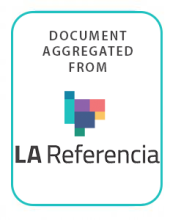Land Library Search
Through our robust search engine, you can search for any item of the over 73,000 highly curated resources in the Land Library.
If you would like to find an overview of what is possible, feel free to peruse the Search Guide.
/ library resources
Showing items 10 through 18 of 5161.El “huarango” (Prosopis pallida), es una especie vegetal que crece en las partes más secas a lo largo de la Costa del Pacífico y algunos sectores de la región andina del Perú, soportando un alto grado la deforestación debido a sus múltiples usos como alimento, forraje, abono, madera, medicinal, e
Desde el reconocimiento de la existencia del desplazamiento forzado, el Estado ha ampliado y fortalecido la protección para los derechos de las víctimas. No obstante, las vulnerabilidades asociadas a la situación de desplazamiento se han agudizado.
RESUMEN El crecimiento urbano contemporáneo adopta patrones fragmentados y escasamente densos.
This note is part of an Action Notes series and provides guidance for governments and companies on good practice in occupational health and safety policies, programs, procedures and processes, a matter of critical importance given that half the world’s working population is in agriculture
This note is part of an Action Notes series and provides guidance for governments on how to create an investment climate that is conducive to attracting high-quality, responsible investment in agriculture.
This note is part of an Action Notes series and provides guidance to governments on how to screen and select prospective investment projects to ensure they maximize the social, economic, and environmental benefits while minimizing the risks.
This note is part of an Action Notes series and provides examples of tools that government agencies can adapt to their national context and use to develop the technical capacity to screen and select investors.
Este artículo trata de las respuestas mediáticas a la crisis actual en la Costa Caribe de Nicaragua y los retrocesos a las luchas regionales por la autonomía y los derechos a la tierra.
Imagine a city that is more competitive, with higher-quality neighborhoods, lower infrastructure costs, and lower C02 emissions per unit of activity. This city has lower combined transportation and housing costs for its residents than other cities at similar levels of economic activity.





